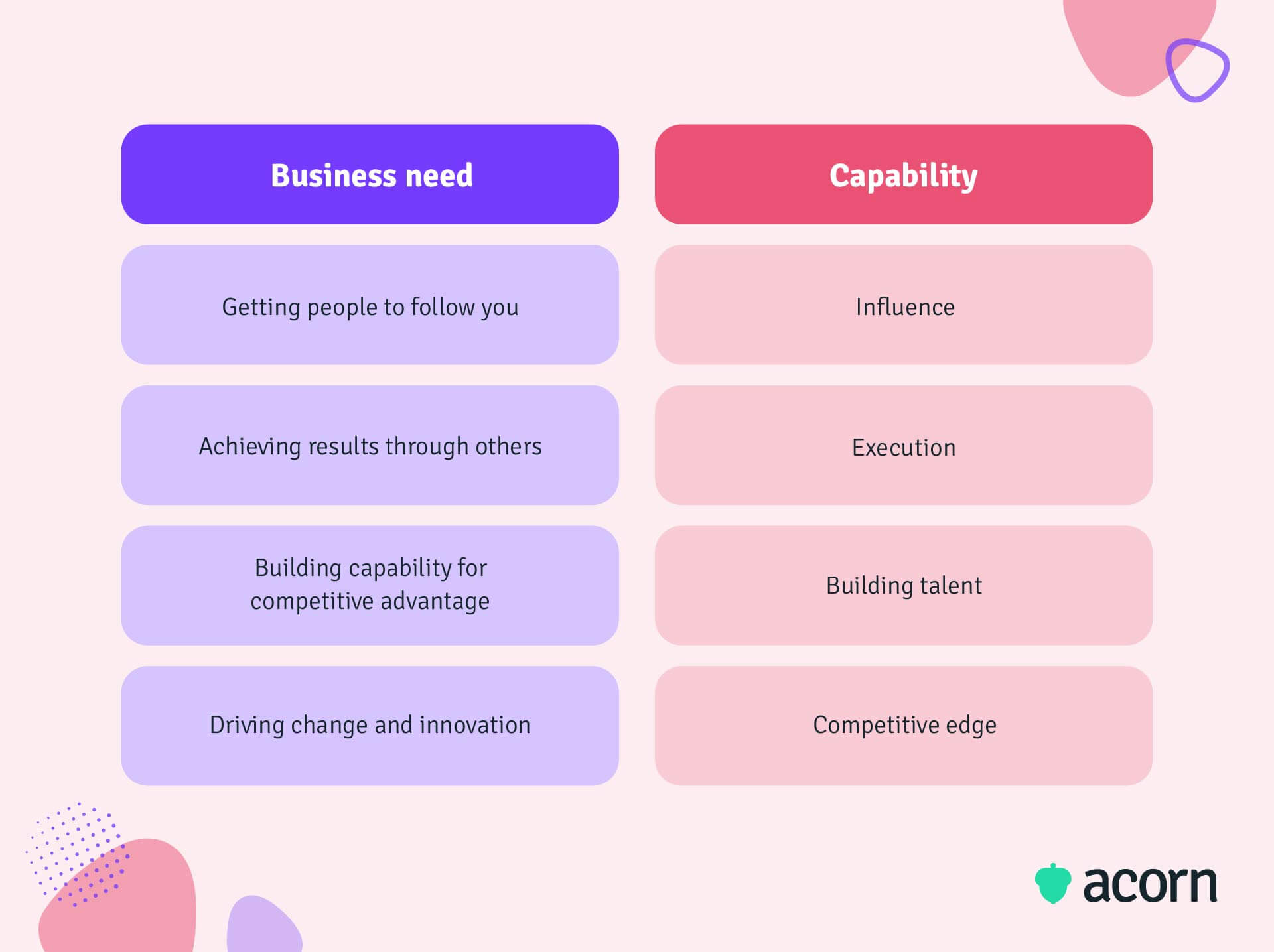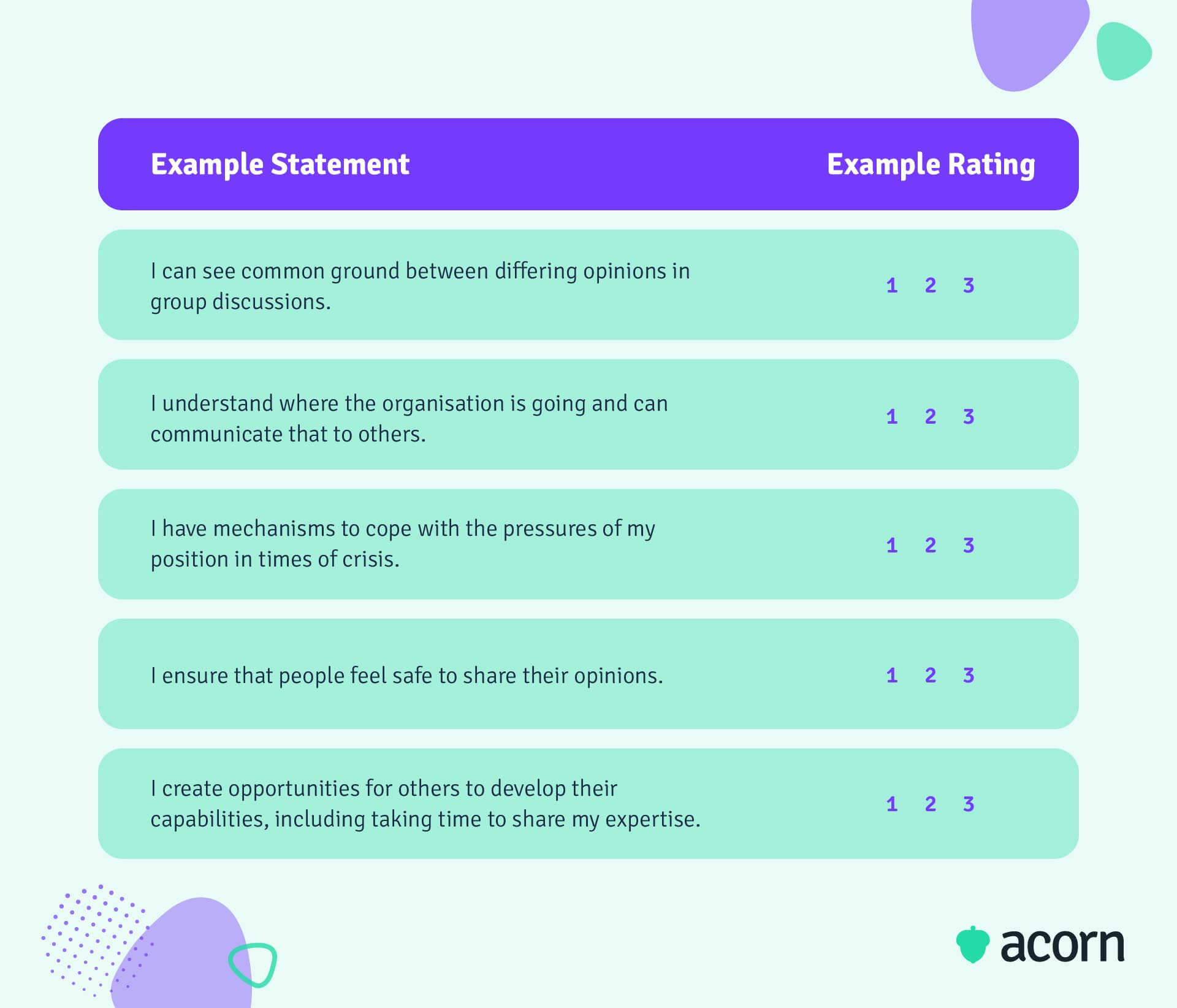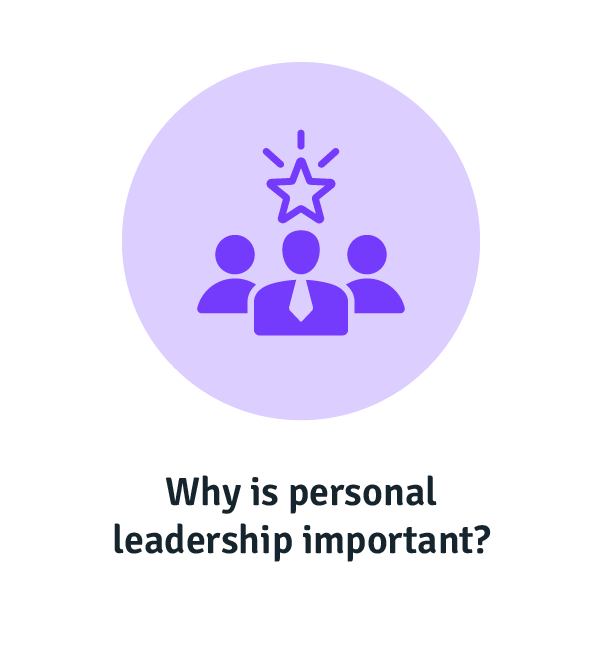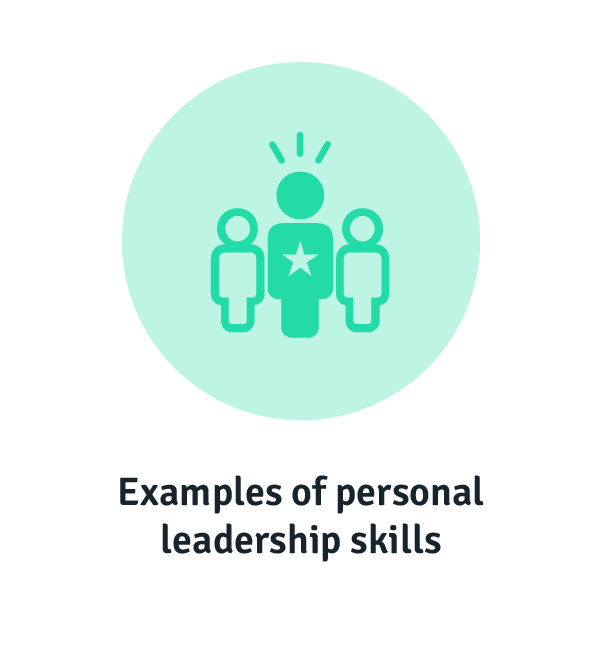Personal leadership is a fail safe for poor leadership. It ensures people are accountable to their own life goals in order to be the most effective leaders possible.
But it’s not an easy thing for leaders, both emerging and existing, to nail. We’ll cover the importance of encouraging authentic personal leadership amongst your leaders and how to create a personal leadership development plan in this blog.
What is personal leadership?
Personal leadership is the process of defining what type of leader you want to be. It involves assessing your own career goals and taking ownership of your actions in order to achieve them.
It’s not a leadership style. Personal leadership is a concept that involves wanting to grow as a person—not just a leader—and taking action to reach those goals.
Why is personal leadership important?
To state the obvious: Leaders play an important role in the workplace. They shape and execute strategy, creating tasks, priorities and goals that enable employees to do their work effectively and achieve business outcomes. Leaders are also stewards of well-being for their teams, especially in times of economic uncertainty. In short, they underpin the health of an organisation.
Yet Harvard Business Review found that most organisational leadership development programs fail because they overlook the attribute that shapes how people think, learn and ultimately behave: Their mindset.
Mental lenses dictate how we navigate the world. People who possess fixed mindsets believe that intelligence is pre-determined and natural talent trumps learned abilities. Uncertain times can be mentally catastrophic for this kind of person.
But those with growth mindsets—or a belief that talent, capability and intelligence are fluid and can be improved through effort—have more fulfilling lives. They are curious and mentally primed to take on challenges, utilise feedback and seek development in order to meet their goals.
When it comes to the strength of your leadership bench and ranks, leaders with growth mindsets are what will successfully scale and lead an organisation. And that brings us back to personal leadership. Defining leadership with a growth mindset ultimately means:
- Disrupting one’s own way of work for the sake of innovation or efficacy
- Developing an authentic approach to leadership
- Working with self-awareness and without ego
- Shaping resilient employees
- Recognising and rewarding learning from failure in others
- Avoiding leaders who exist in echo chambers.
The challenge of personal leadership development
Personal development, particularly for leadership, requires two core things:
- Self-awareness
- Environmental awareness.
The first asks people to look at themselves in the cold, hard light of day. But it’s not human nature to be objective with ourselves. In fact, too much self-reflection can lead to less satisfied or more biased self-knowledge, which doesn’t offer the kind of self-aware insight necessary to achieve personal growth.
On the other hand, emerging leaders (and existing leaders looking to redefine their approach) need to understand what is needed of them to be successful in a business environment, and therefore progress in line with their goals. But that too can be subjective—just consider how an up-and-comer in marketing would view crucial business capabilities compared to someone in IT.
So, while the outcome of defining personal leadership is inherently unique to the individual, the process should be guided. This ensures employees are equipped with the right tools and resources to make an accurate decision on their personal leadership.
This thinking is what drove us to create the performance learning management system (LMS), the only solution that guides learners step by step to master the capabilities needed to excel. By mapping capabilities to contextual learning content, emerging leaders can see a tailored path for development and organisations can monitor their talent pipeline, in real time.
Creating a personal leadership plan
Keeping employees accountable to authentic personal leadership development requires a plan. A personal leadership development plan, that is.
The aim here is create a structure that enables employees to:
- Outline their career vision
- Define good leadership
- Identify strengths and weaknesses
- Set action goals.
Outline career vision
Participants needn’t be limited by their current role or succession plans. They should be encouraged to consider the health and satisfaction levels their ideal career pathway will give them. Visioning exercises are prompts to get people thinking about how they can improve or develop their careers based on where they want to be in future. This is what helps develop truly authentic personal leadership.
Questions to help this reflection include:
- What place does my career hold in my life?
- What do I want to do more of in my life?
- What do I love doing? What are my passion skills?
- What do I need to feel most like myself?
- What is the impact I would like to have? What legacy would I like to leave?
- What are the values I want to express at work?
- If money was no object, what job what I do?
You can get employees to create a personal mission statement from this exercise or simply leave the vision as a list of values to hold when making career choices.
Define good leadership
The reason you’re only guiding employees to define what an effective leader is to them is because everyone will define effective leadership differently. And in order to put the personal in personal leadership, their idea of good leadership should be authentic to their values.
Some non-leading questions to sample include:
- Are leaders born or developed through self-study and nurture?
- What and who do leaders impact?
- Are leaders experts at one thing or many?
- Can there only be one leader in a team?
- How do leaders shape culture?
- Should leaders be “nice” people?
- What three traits does a “good” leader exhibit?
- What drives leaders to succeed?
The outcome here is to expand that list of values with more leadership and career-centric qualities to use later.
Assess strengths and weaknesses
When we know the ideal future, we need to determine the gaps impeding us from getting there. To get the most out of this exercise as part of broader leadership development, it’s helpful to use existing capability frameworks or skills maps or matrices to assign more meaning to reflection.
If you don’t have a framework or are unsure how to utilise it at this stage, we recommend considering the KPIs of a leadership position and the business need for leaders and simplifying the outcome of actioning those KPIs or challenges. Emerging first-time leaders, as an example, are more like to have gaps in soft and behavioural skills.

Capabilities can be distilled by the responsibility of the leadership position, too. Executives might have to leverage their reputation internally and externally to drive business success, but managers would focus on projecting personal confidence, expertise and authority to engage others.
Performance reviews
Managers and mentors are best placed to give an objective view of personal and professional development. Since they are accountable to employee KPIs, they’re able to give participants insight on their rate of progression, current strengths and potential gaps for improvement. They can also act as a sounding board for career vision planning.
Peer reviews
Coworkers are another great source of feedback, albeit this is an avenue that should be taken with certain guardrails. It doesn’t need to be incredibly frequent or detailed. Netflix asks employees to suggest what their colleagues should start, stop and keep doing.
It gives employees more juice for their self-reflections with potential assessment questions like:
- Am I impeding peers for working at their full potential for fear of risking friendship or likeability?
- Do I know what makes my peers feel appreciated?
- Am I clear when communicating my needs, such as preferred method of feedback?
- Do I hold myself to the same standards and expectations as my peers?
Self-assessments
Leadership assessments don’t need to be completely in line with what participants are currently doing or about to assume. Use statements that reflect the ideal capabilities your organisation wants in leaders.

Build action goals
This is the point at which participants start planning actionable steps towards achieving life goals. The purpose is to narrow the focus for the impact they want to have as a leader.
The format is simple: Value + action = goal.
“I will lead by example with honest communication and collaborative decision making so my employees can develop their skills” is one example. We’ll cover a few more with nuance in the next section.
Examples of personal leadership skills
Those on a personal leadership development plan don’t need to strive for complete individuality. Many successful leaders embody similar personal leadership qualities. It’s often helpful to provide a jumping off point for leaders to refer to when creating their action goals.
Stay hungry
Not power hungry, but hungry for the company mission, for the next step in your career, for the growth of your team.
Think about kickstarting a workout plan. The idea is that you don’t gorge yourself by doing too much too soon, lest the desire to do it fizzles out. Accepting that there is always more to learn and always time to do it keeps a leader hungry to do well in their career, not just their role. And as a leader to others, it means rewarding:
- Attempting over simply succeeding
- Learning over knowing (and driving growth mindsets in their team)
- Change over persistence in the status quo or an ineffective way of work.
Tolerate conflict, neutralise toxicity
Healthy debate is important for dynamic teams. Cognitive diversity:
- Ensures problems and opportunities are seen from every perspective
- Encourages innovation and ingenuity in ways of work and output
- Creates an honest, transparent and more accepting culture.
But there is a point where it’s not productive conflict. A culture of arguing shows there’s something wrong culturally—when people want to “win” an argument, when people seek to make others look bad, when people criticism is not given based on merit.
Keeping people to facts and logic, removing personal feelings from debates, staying humble and putting a shared outcome in the forefront of everyone’s minds is the way to action this quality.
Be humble
Ego is a sign of authoritative leadership. There are many unforeseen issues with making decisions based on ego.
- An individual exists in an echo chamber, since they’ll seek to surround themselves with yes-men.
- Personal values may be twisted and misaligned with an organisation’s ethos.
- The greater the ego, the more vulnerable a person is – making them more emotionally charged in the face of failure.
- A strong confirmation bias disconnects a leader from their culture and ultimately, clients, customers and stakeholders.
Humility means removing oneself from the equation. It means understanding that no one person is the organisation lynchpin, rather that people collectively create value and success.
Compassionate accountability
Above all else, leaders should be accountable to their KPIs, particularly those related to the successful execution of their function’s strategy.
Deal with poor performance in a timely manner but assume good intent by seeking to understand the root cause: Personal issues, poor systems or processes, lack of understanding. People won’t learn if a leader fixes a mistake without their knowledge. Sometimes a leader has to be the bad guy in a scenario to avoid a catastrophic issue.
Key takeaways
Developing authentic personal leadership skills requires leaders to reflect on what kind of leader they want to be.
It’s not an easy process for both emerging and existing leaders, as it requires awareness of one’s own strengths and weaknesses and the needs of their organisation in order to effectively progress.
Creating personal leadership development plans for employees gives them guidance in taking actionable steps towards meeting their career goals. In the end, employees understand who they want to be, what they’re currently capable of and what they need to get to their ideal state, while organisations gain engaged, highly skilled leaders committed to constant development. Win-win.
Related Reads on This Topic

5 Examples of Leadership SMART Goals to Improve Leadership Capability
Learn how to set and define leadership SMART goals to improve your own leadership capability and drive your team’s success…

Why Leadership Development Planning is Important and How to Create a Leadership Development Plan
Leadership development planning plays a valuable role in driving better results for your company. Find out why and how to create an effective plan…

The Vital Role Mentoring Plays In Developing a Future Leader
Mentoring a future leader within your company can play a major role in defining their success and development. Find out more about the vital role it plays…





